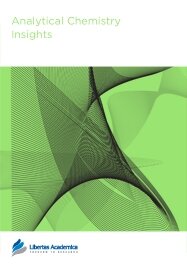

Publication Date: 17 Sep 2007
Journal: Analytical Chemistry Insights

1Department of Pharmacy, King’s College London, Franklin-Wilkins Building, 150 Stamford Street, London SE1 9NH, U.K. 2Institut für Physiologische Chemie, Universitätsklinikum, Hufelandstr. 55, D-45122 Essen,Germany.
Abstract: The present study introduces a method for determining the labile iron pool (LIP) in human lymphocytes. It is measured using the probe CP655, the fluorescence of which is stoichiometrically quenched by the addition of iron. The intracellular CP655 fluorescence in lymphocytes was quenched by increasing intracellular iron concentrations using the highly lipophilic 8-hydroxyquinoline iron complex. Intracellular fluorescence quenching, mediated by the physiological intracellular labile iron, can be recovered on the addition of excess membrane-permeable iron chelator, CP94. The intracellular probe concentration was measured using laser scanning microscopy. An ex situ calibration was performed in a “cytosolic” medium based on the determined intracellular CP655 concentration and probe fluorescence quenching in the presence of iron. The concentration of the LIP of healthy human lymphocytes was determined to be 0.57 ± 0.27 μM. The use of the fluorescent probe CP655 renders it possible to record the time course of iron uptake and iron chelation by CP94 in single intact lymphocytes.
PDF (600.58 KB PDF format)
RIS citation (ENDNOTE, REFERENCE MANAGER, PROCITE, REFWORKS)
BibTex citation (BIBDESK, LATEX)
XML
PMC HTML
Publishing in Air, Soil and Water and Water Research was the best experience I have had so far in an academic context. The review process was fair, quick and efficient. I congratulate the team at Libertas Academica for a very well managed journal.Magnus Karlsson (IVL Swedish Environmental Research Institute, Stockholm, Sweden) What Your Colleagues Say
Copyright © 2012 Libertas Academica Ltd (except open access articles and accompanying metadata and supplementary files.)
FacebookGoogle+Twitter
PinterestTumblrYouTube